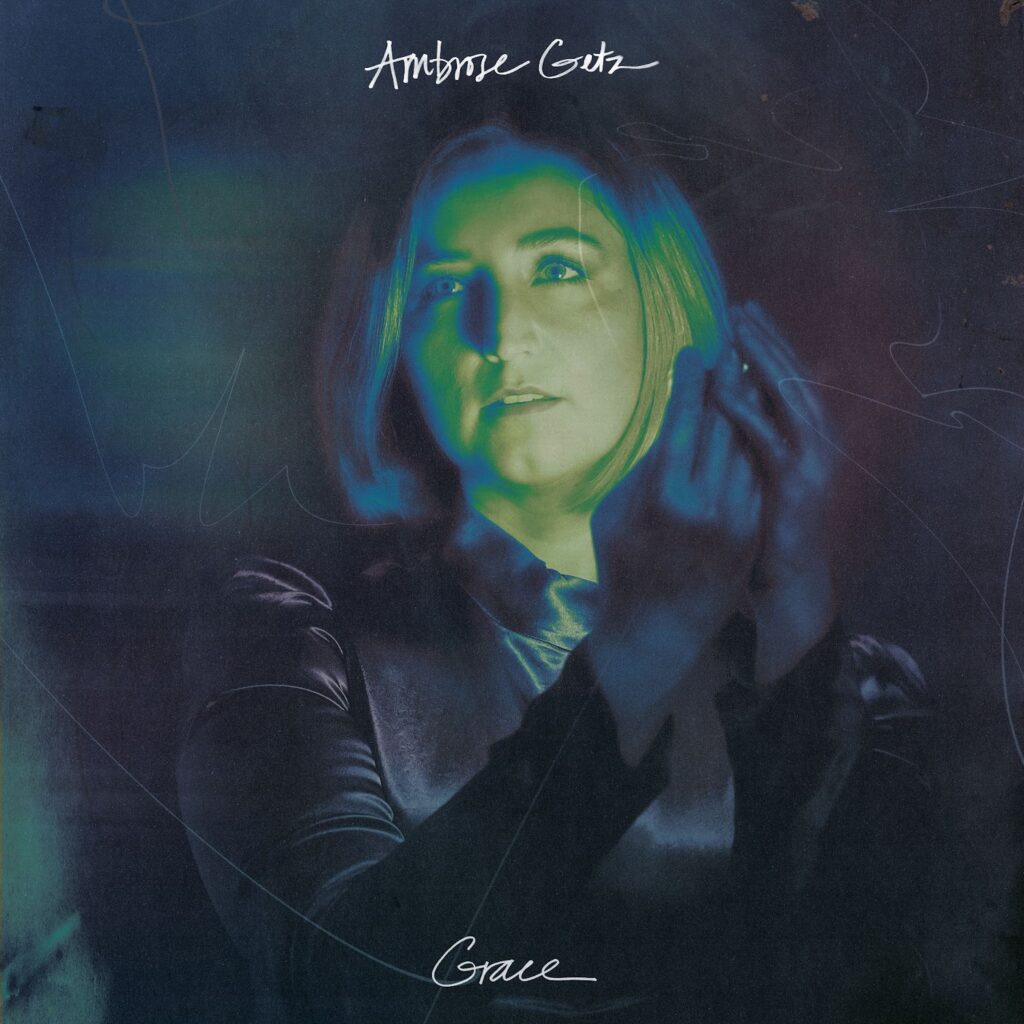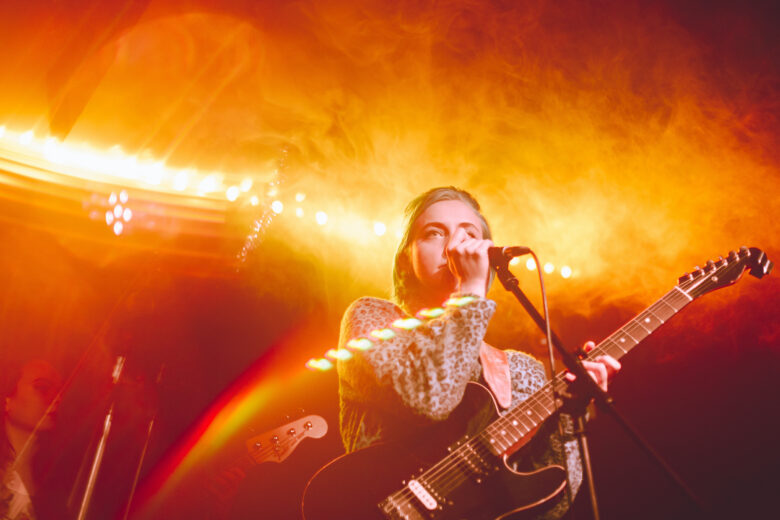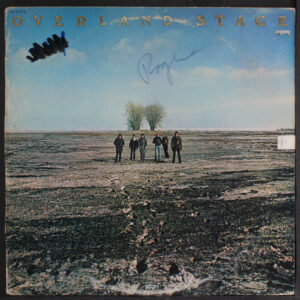Photo credit: Noel Woodford
After Ambrose Getz released the gorgeously crooning jazzy throwback of a song,Starlight, today she unleashes the epic song & visualizer “Grace.”
Ambrose explains to Rock & Roll Globe: “I wrote “Grace” after reading the story “Passion” by Alice Munro. The story is about a young woman in an existentialist moment. I wanted the track to feel like a rush of blood to the head, like when you stand up suddenly, everything blacks out and you see stars. When I brought the song to my band, drummer Ben Silashi played with a lot of variation, almost like a solo. I joke now that this is really Ben’s song because the drum performance is so emotional — it has been known to make fello w musicians cry! The track also features distorted electric guitars fading in and out, and a beautiful string arrangement by Lisa Hoppe.
For the video, I collaborated with Bangkok-born, Brooklyn-based creative designer Nitcha Tothong (Fame). Fame is an animator and creative coder who writes audio-reactive code. Rather than create an animation loop, we wanted to emphasize the dynamic nature of the track by creating visuals that were triggered by the audio itself.“
Filmmaker Nitcha Tothong (Fame) says this about the video:
“The visualizer animation for ‘Grace’ combines a frame-by-frame digital drawing loop and audio-reactive creative coding techniques to portray Grace’s emotional states. The eyes are hand-drawn and illustrated with rough lines to conform with the generative graphics. They are the only tangible elements that communicate the emotions in the darkness by switching between direct gaze with the audience, looking away, and shutting down. The song is very dynamic, especially with the drum sounds, which are very effective with the ragged lines and graphics that audio-react to specific parts of the song, creating new emotions for viewers. The audio-reactive graphics were created in P5.js and hydra.js, my usual tools for which I wrote a custom code for this project.”
If there’s anything Ambrose Getz has taken from her musical background, it’s how to push the limits of form. “Can we make it unusual through harmonic, melodic, or rhythmic choices? Can the lyrics be about something outside of the usual love songs? That mindset is at the heart of this album,” she says of her debut full-length, Great House of Embers, out November 2. Throughout the record’s nine tracks, Getz showcases her fluency in many styles, all run through an art pop filter a la St. Vincent or Bjork. Synths, strings, and electric guitars blend with jazz-inspired percussion as Getz’s capable voice delivers the lyrics.
Musically, Ambrose Getz deconstructs and reconstructs various genres, including American folk music, Bossa Nova, classic rock, 40s jazz, and more. Getz recorded with a talented group of international musicians consisting of Almog Sharvit (also the producer), Ben Silashi, Tal Yahalom, and Micha Gilad. Emerging from the indie art-pop scene in Brooklyn, Getz has built a network of artists who inspire each other to reconsider American identity. Also, they’re all top-notch musicians she knew could handle her startling range. “I looked for players who could tap into the heart and variety of styles while finding ease in the playing. All these musicians can go from rock to folk to jazz to pop and back without missing a beat!” The appeal of dynamic innovators like Getz and her collaborators lies in their ability to create work that defies passing trends.
Sometimes Getz’s adventurous spirit means adding synths and strings to a song inspired by jazz standards (“Starlight”), and sometimes it means crunchy guitars and twinkling synths (“Fantasies”). “Mary Awakens” takes a psychedelic detour through clips of Getz’s aunt speaking, girl-group harmonies, and a walking bassline. Getz has a strong, adaptable voice reminiscent of Suzanne Vega’s, and she uses every bit of it. “I wanted to sing loud at certain points and have the music be banging!”
Singing loud, breaking forms, and telling complex stories converge in the album’s themes. “When I wrote the song ‘Great House of Embers,’ I was thinking about JFK’s 1961 speech where he called America a “city upon a hill” and how Americans believed we had to be an example for other nations. My generation now sees the destruction our country has caused. Visualize a giant house on a big hill that has been on fire for a hundred years and is reduced to embers. That’s what my generation inherited.” The title track was inspired by Citizenfour, a documentary by Laura Poitras about NSA surveillance brought to light by Edward Snowden.
An avid reader, one of Getz’s favorite writers is Nobel laureate Alice Munro, whose work serves as inspiration for the song “Grace.” “Her writing always has a subtle flip that can turn you on your head. She was the first author I read who consistently centered women’s stories, with depth and darkness and subtlety.” This influence is evident in Getz’s own lyrics, which deliberately delve into the experiences of women across generations, crafting narratives that are so apt and thought-provoking that they are sure to spark conversations between mothers and daughters. Through her shrewd songs about women’s lives, Getz shines a light on the cultural legacies we inherit both politically and personally. Her lyrics offer a keen insight into the complexities of these legacies, inviting us to explore and challenge the narratives that shape our understanding of women’s experiences.
Getz never sacrifices the music for the message, as you can hear on debut single “Black Hole.” Written to be “dark and danceable,” the lyrics personify capitalism as an insatiable femme fatale, echoed in the music video directed by Margot Bennett and filmed by Eurica Yu. The video’s imagery—shot with dark backgrounds—pulls the viewer into a world where the allure of capitalism is as irresistible as it is dangerous. A single spotlight follows Getz, clad in androgynous black and white and sporting alarm-call red lipstick. Those images intercut with scenes of Getz wearing skintight black clothing and dancing, her red hair catching the light.
Rather than posit herself as a victim of zeitgeist or a savior for our times, Getz offers candor and imagery alongside her range of musical styles. “Ultimately I see myself as an artist who writes songs that center women’s stories,” she says. Just as she asks what Americans inherited socio-politically, she looks to the women in her family to investigate what she has inherited personally. “Many of the songs on this album are short stories about my female relatives. ‘Mary Awakens’ is for my aunt, Mary Frances Ambrose, and ‘Carrie’ is for my maternal grandmother.”
With Great House of Embers, Getz adds another valuable record for the future to inherit. It’s a snapshot of a dark time illuminated by the hope of innovation.
Connect with Ambrose Getz:
WEBSITE // INSTAGRAM // APPLE // TIKTOK // SPOTIFY// BANDCAMP




